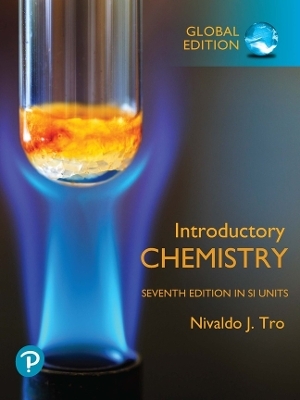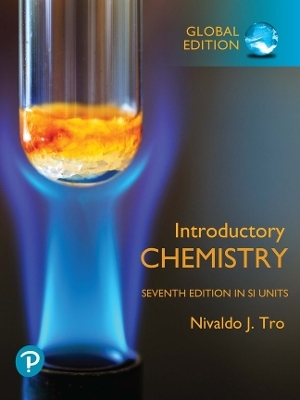
Information Retrieval – SciFinder 2e
Wiley-Blackwell (Hersteller)
978-0-470-74941-8 (ISBN)
- Keine Verlagsinformationen verfügbar
- Artikel merken
SciFinder(r) is rapidly becoming a preferred means to access scientific information in industry and universities worldwide. It accesses databases which span the chemical, engineering, life, medical, and physical sciences, including five Chemical Abstract Service databases and the National Library of Medicine bibliographic database Medline(r). No other single information access tool has such breadth of coverage for scientific journal and patent documents. Information Retrieval: SciFinder(r), 2nd Edition is an essential guide explaining how to get the best out of SciFinder. It discusses the 50+ options in SciFinder(r) including topic, bibliographic, and chemical substance explore options, and post-processing options Analyze, Refine, and Categorize.
The book: * Summarises the databases and explains how to take advantage of the unique search and analysis options* Explains selected algorithms behind the operation of SciFinder(r) and why it helps to understand them* Discusses why it is important, and how to apply scientific method to information retrieval* Describes how to search for chemical structures and chemical reactions This second edition of Information Retrieval: SciFinder(r) has been fully revised and updated to incorporate the latest functionality and content of SciFinder(r). Written by a scientist for scientists, this book will increase your research creativity and productivity and is an essential resource for anyone needing scientific information in academia or industry.
Professor Damon D Ridley Professor Ridley is recognized as one of the leading exponents in the field of chemical information retrieval using SciFinder. He is the author of Exploring SciFinder (Booknet Co Ltd, 2004), Information Retrieval: SciFinder and SciFinder Scholar (Wiley, 2002), and Online Searching: A Scientist's Perspective (Wiley, 1996), and over 50 scientific publications in the area. He has given well over 1000 presentations, workshops and demonstrations in the subject worldwide over the last 24 years.
Preface. 1 SciFinder(r): Setting the Scene. 1.1 "I just want to Do a Quick and Simple search on..." 1.2 The SciFinder Way. 1.3 Looking Ahead. 2 Databases in SciFinder. 2.1 CAS Bibliographic Database (CAPLUS). 2.2 NLM Bibliographic Database (MEDLINE). 2.3 CAS Substance Database (REGISTRY). 2.4 CAS Chemical Reaction Database (CASREACT(r)). 2.5 CAS Chemical Catalog Database (CHEMCATS(r)). 2.6 CAS Regulatory Information Database (CHEMLIST(r)). 2.7 Summary of Key Points. 3 Explore by Research Topic. 3.1 Introduction. 3.2 How SciFinder Converts the Query to a List of Candidates. 3.3 How is a Concept Derived? 3.4 Choosing Candidates. 3.5 Working from the Reference Screen. 3.6 Working from the Record Screen. 3.7 Applying Scientific Method to Information Retrieval. 3.8 Summary of Key Points. 4 Explore by Chemical Substance. 4.1 Introduction. 4.2 Registration of Substances. 4.3 Searching for Substances: The Alternatives. 4.4 Explore Substances: Chemical Structure. 4.5 Explore Substances: Substance Identifier. 4.6 Explore Substances: Molecular Formula. 4.7 Explore References: Research Topic. 4.8 Summary of Key Points. 5 Substructure and Similarity Searching. 5.1 Introduction. 5.2 Searching Structures: Substructure. 5.3 Searching Structures: Working from the Initial Substance Answer Set. 5.4 Similarity Search. 5.5 Further Examples of Show Precision Analysis. 5.6 Additional Structure Query Options. 5.7 Getting References. 5.8 Combining Explore Substances and Explore References. 5.9 Summary of Key Points. 6 Additional Search and Display Options. 6.1 Introduction. 6.2 Explore: Author Name. 6.3 Explore: Company Name. 6.4 Explore: Document Identifier. 6.5 Explore: Journal and Explore: Patent. 6.6 Getting Information from Bibliographic Records. 6.7 Further Issues with Finding Information on Substances. 6.8 Opportunities for MEDLINE Searchers. 6.9 Searching for Substances in the Biological Sciences. 6.10 Searching for Information on Polymers. 6.11 Summary of Key Points. 7 Searching for Information on Chemical Reactions. 7.1 Introduction. 7.2 Specific Search Options in CASREACT. 7.3 Reaction Search Strategies. 7.4 Searching for Reactions through Explore References: Research Topic. 7.5 Combining Structure, Reaction, Functional Group and Keyword Terms. 7.6 Summary of Key Points.Appendix 1. Some SciFinder Resources. Appendix 2. CAS Roles in CAPLUS. Appendix 3. Some Basic Principles Used by SciFinder in the Interpretation of a Research Topic Query. Appendix 4. Registration of Substances. A4.1 Single Component Substances. A4.2 Multicomponent Substances. A4.3 Metal Complexes. A4.4 Macromolecules. A4.5 Other Cases. Appendix 5. Understanding Structure Searches. A5.1 The Resonance Issue. A5.2 The Tautomerism Issue. A5.3 Chain Lock Tool. A5.4 Ring Lock Tool. Appendix 6. Original Publication Discussed in Chapter 7, Section 7.1. Index.
| Erscheint lt. Verlag | 15.10.2009 |
|---|---|
| Verlagsort | Hoboken |
| Sprache | englisch |
| Maße | 179 x 252 mm |
| Gewicht | 766 g |
| Themenwelt | Naturwissenschaften ► Chemie |
| ISBN-10 | 0-470-74941-5 / 0470749415 |
| ISBN-13 | 978-0-470-74941-8 / 9780470749418 |
| Zustand | Neuware |
| Haben Sie eine Frage zum Produkt? |
aus dem Bereich


